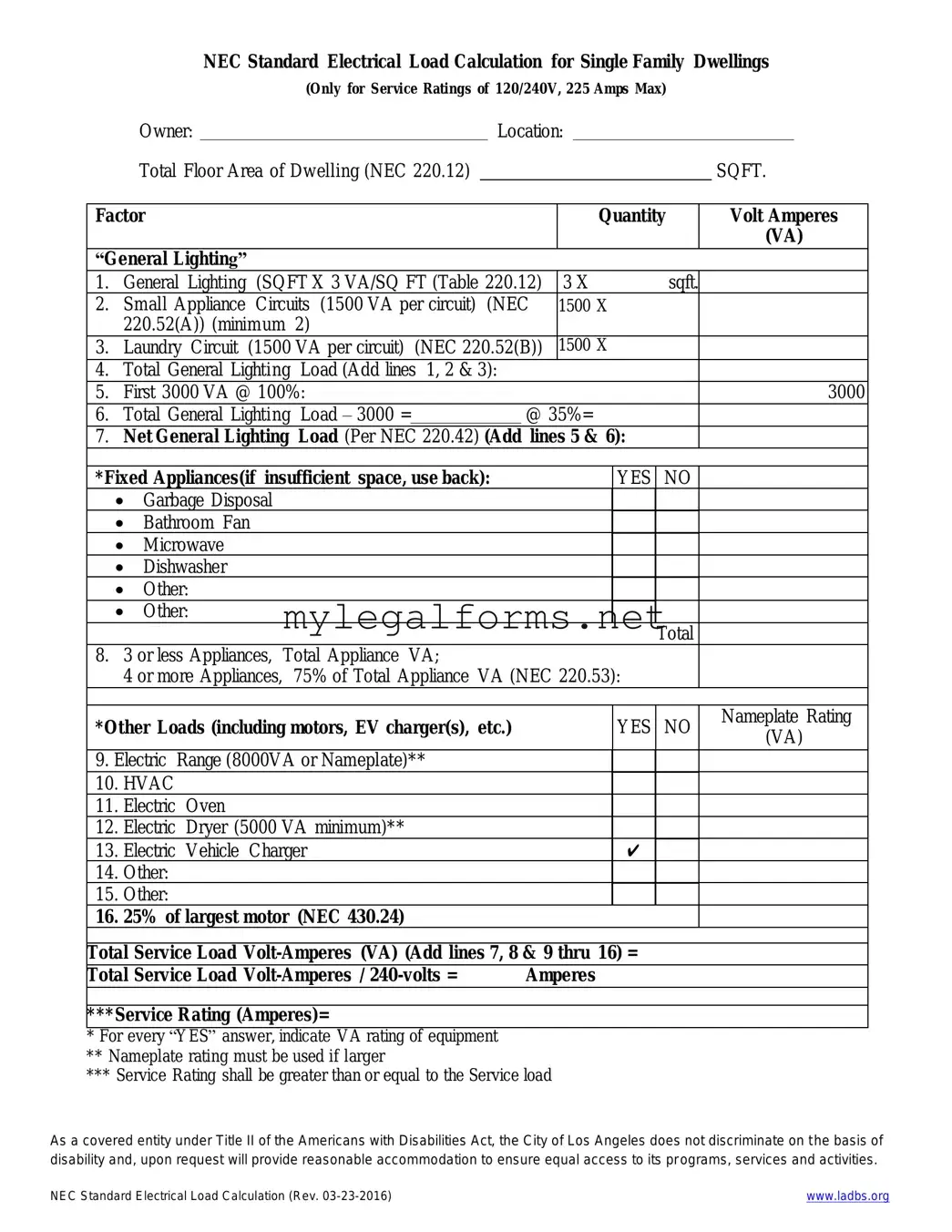Filling out the LADBS NEC Standard Electrical Load Calculation form can be a daunting task for many. One common mistake is failing to provide accurate information about the electrical appliances and systems in use. Each appliance has a specific load requirement, and underestimating these can lead to serious issues down the line. It's crucial to list all appliances and their respective wattages correctly to ensure the calculation reflects the actual load.
Another frequent error involves neglecting to account for future expansions or additional equipment. People often focus solely on their current needs, overlooking potential growth. By not considering future electrical demands, individuals may find themselves needing to upgrade their systems sooner than expected, which can be both costly and inconvenient.
Inaccurate calculations can also stem from misunderstanding the different load categories outlined in the form. The distinction between continuous and non-continuous loads is vital. Continuous loads must be calculated at 125% of their rated load, while non-continuous loads are considered at their full capacity. Confusing these two can lead to significant underestimations of the required electrical service.
Another mistake is failing to include all relevant circuits in the load calculation. Some may forget to factor in lighting, heating, or cooling systems, which can drastically alter the total load. Each circuit plays a role in the overall electrical demand, and omitting any can skew the results and lead to unsafe conditions.
People also sometimes misinterpret the guidelines regarding demand factors. The form allows for certain demand factors to be applied based on the type of occupancy and usage. Misapplying these factors can result in either an overestimation or underestimation of the load, which can have serious implications for safety and compliance.
Lastly, individuals often overlook the importance of signatures and dates. Submitting an incomplete form can delay the approval process and lead to further complications. Ensuring that all required fields are filled out, including signatures, is essential for a smooth submission process. Attention to detail in this area can save time and prevent unnecessary back-and-forth with regulatory bodies.

